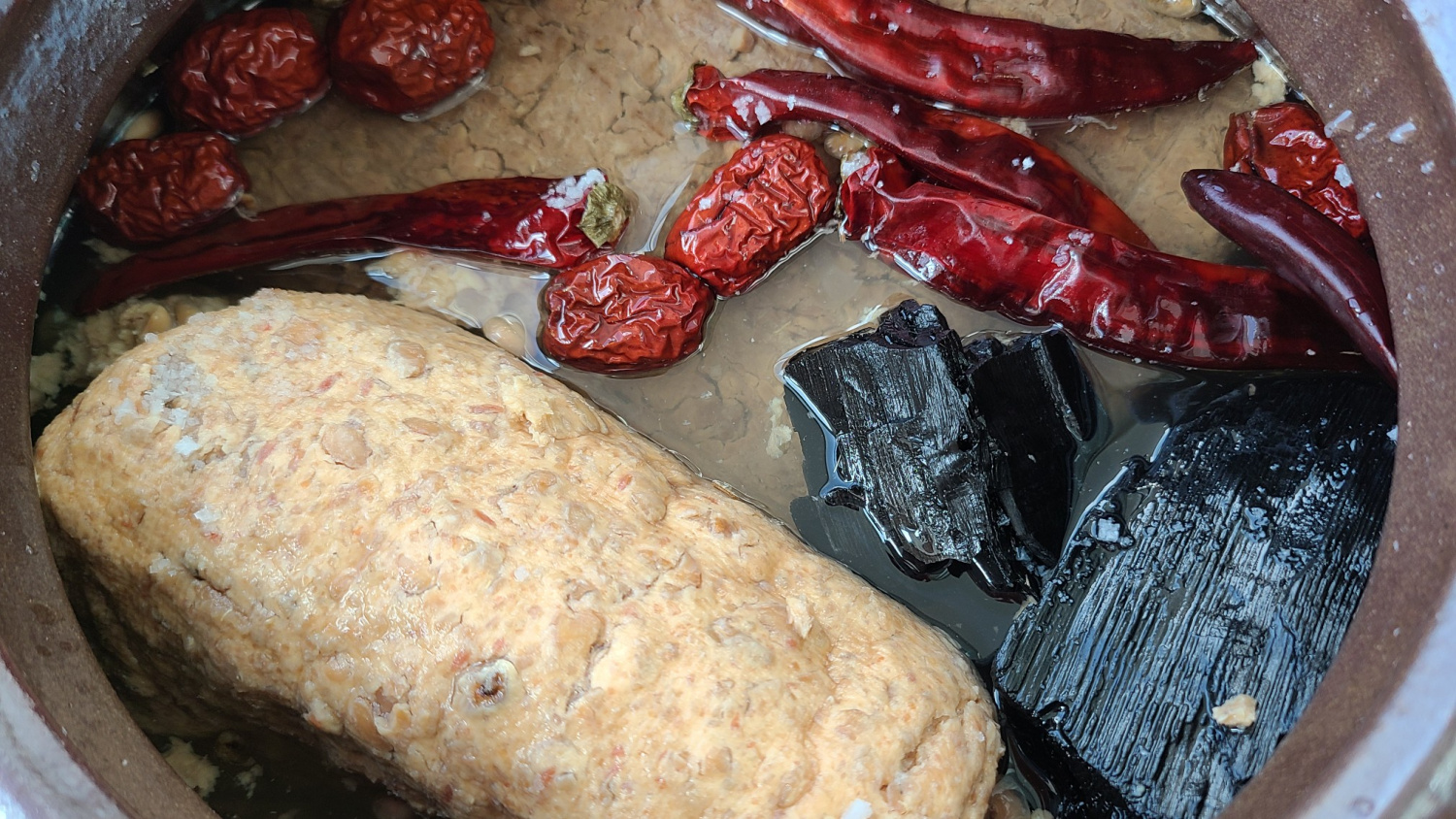Traditional Doenjang & Ganjang Making: Authentic Flavor at Home
Master the Art of Korean Fermentation: Make Delicious Doenjang and Ganjang at Home!

It’s said that jang (fermented soybean paste and soy sauce) made in the first lunar month, Jeongwol, is the most delicious. Traditionally, people often choose auspicious days like days of the horse or days without ghosts to make jang. If you can align with these good days, it’s believed to bring good fortune. For a detailed guide, please refer to https://youtu.be/sscBIzHZgxk. Elevate your home cooking with the rich, authentic taste of homemade jang!
Ingredients for Jang Making- 8kg Meju beans (fermented soybean blocks)
- 4.5~5kg Coarse sea salt (aged for at least 1-2 years to remove bittern)
- 18L Fresh water
- 5-6 Dried chili peppers (sun-dried)
- 10 Dried jujubes (seedless)
Cooking Instructions
Step 1
To start making delicious jang, choose your meju carefully. Select blocks that are firm on the outside, soft inside, and beautifully covered with white or light yellow mold. Avoid meju with black or red mold, as these are not suitable.

Step 2
Thoroughly clean the earthenware pot (jangdok) you will use for fermentation. Pour boiling water into it to sterilize the inside. This step is crucial to prevent unwanted bacteria from affecting the taste of your jang.

Step 3
After pouring boiling water into the jangdok, immediately cover it with a lid and let it sit for a while. This steaming process enhances the sterilization effect.

Step 4
Carefully empty the water from the jangdok. Then, place it in direct sunlight and allow it to dry completely. A thoroughly dried pot is essential for healthy mold growth on the meju.

Step 5
Do not wash the meju by soaking it in water. Instead, use a soft brush to gently wipe away any dust or debris from the surface. Soaking the meju can cause it to break apart.

Step 6
After brushing clean, let the meju blocks dry well in a well-ventilated area, either in the shade or in sunlight, for 2-3 days. Proper drying encourages mold growth and deepens the flavor of the jang.

Step 7
Salt is a key ingredient that determines the flavor of your jang. Use coarse Korean sea salt, preferably aged for at least 1-2 years to remove its natural bittern (gansu). Properly aged salt will not stick to your palm when you grasp it. High-quality salt contributes to a smoother, richer jang flavor.

Step 8
Add 4.5kg of aged coarse sea salt to 18 liters of fresh water. The exact amount of salt might need slight adjustments based on the climate and the specific salinity of your sea salt.

Step 9
Stir the salt and water mixture thoroughly until the salt is completely dissolved, resulting in a clear brine. Ensuring no salt lumps remain is important for a clean taste.

Step 10
After stirring, let the brine settle for a while. This allows any impurities to sink to the bottom, ensuring you use only the clear liquid for your jang.

Step 11
Here’s a fun way to check the brine’s salinity! Gently place a fresh egg into the saltwater. If the egg floats so that about a 500-won coin’s worth is visible above the water, the salinity is just right for making jang. Since the salinity of aged sea salt can vary, always perform this egg test.

Step 12
For a clear and pure jang, charcoal is a great addition due to its natural purifying properties. To prepare the charcoal, either lightly toast it over a flame or boil it in a concentrated saltwater solution for at least 15 minutes to ensure thorough sterilization.

Step 13
Carefully place the dried meju blocks into the sterilized jangdok, arranging them snugly. Try to fill the pot without leaving too many large gaps between the meju blocks.

Step 14
Now, it’s time to pour in the clear brine. Line a sieve with a clean cheesecloth and slowly pour the prepared saltwater through it. This step further filters out any remaining impurities from the brine.

Step 15
After adding the meju, place the dried chili peppers, jujubes, and the prepared charcoal into the pot to infuse flavor and aroma. After a short while, test the salinity again with another egg. As the meju absorbs the brine, the salinity can change. If the egg doesn’t float to the 500-won coin size, add a little more salt to reach the correct level.

Step 16
Finally, sprinkle about one to two handfuls of salt evenly over the top of the meju. This helps inhibit mold growth and further enriches the jang’s flavor. Once the salt is sprinkled, securely cover the pot with its lid and place it in a location that receives ample sunlight and has good ventilation.

Step 17
After 3-4 days, you’ll notice the water level in the jangdok has decreased as the meju absorbs the brine. At this point, replenish the pot with more brine of the same concentration to maintain the proper liquid level. If the meju blocks float above the brine, gently press them down with a clean tool. Using a transparent glass lid can be beneficial as it allows both ventilation and sunlight exposure. After approximately 50-60 days, check the condition of the jang and proceed with ‘jang gareugi’ (separating the doenjang and ganjang). From this point on, you can enjoy the even deeper and richer flavors of your homemade fermented sauces.




